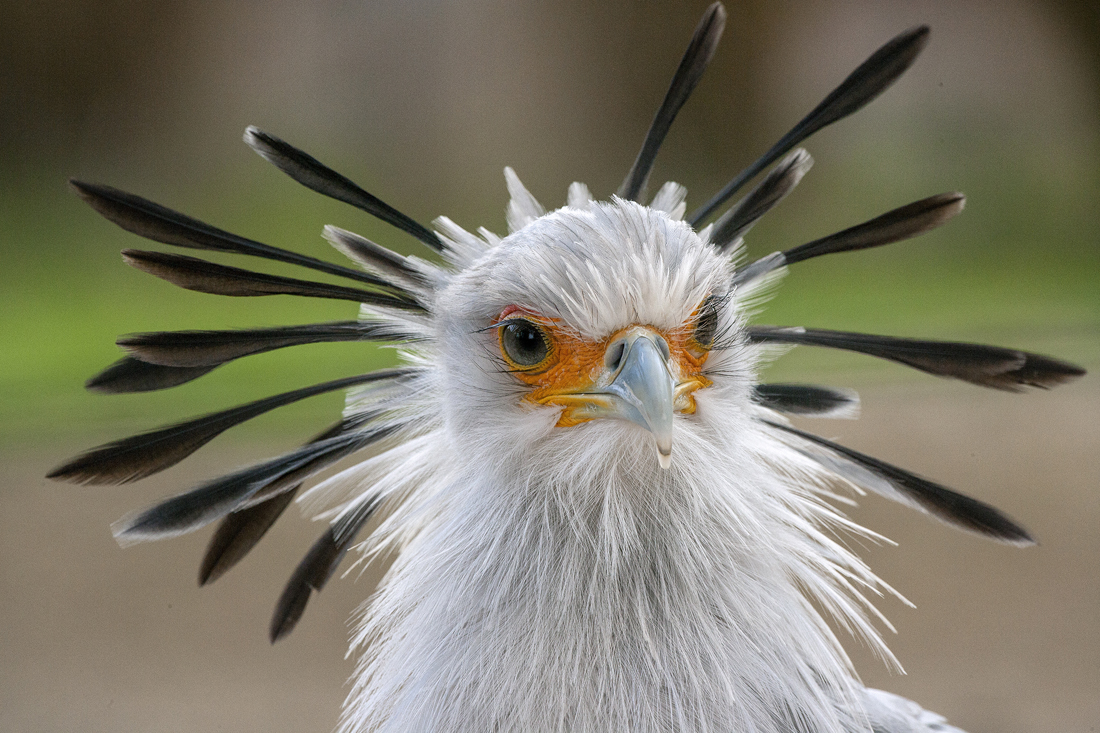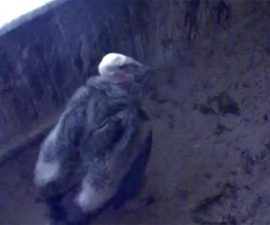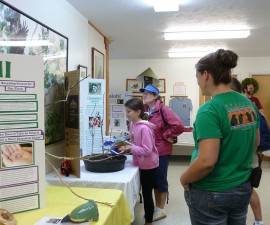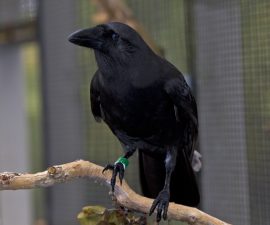The first glimpse of a secretary bird can send a mind reeling with wonder. Those legs…that beak…that piercing gaze. And, if the bird has its crest feathers erect, oh my, that headpiece! Claiming the title of World’s Tallest Raptor, the secretary bird’s lifestyle is as interesting as its appearance.
BY Wendy Perkins
Photography by Ken Bohn
Mention the term “bird of prey,” and most people think of soaring eagles and hawks. Secretary birds break that mold, as they hunt on foot. Long, stork-like legs hold most of the bird’s body above vegetation, giving it a better view of potential prey.
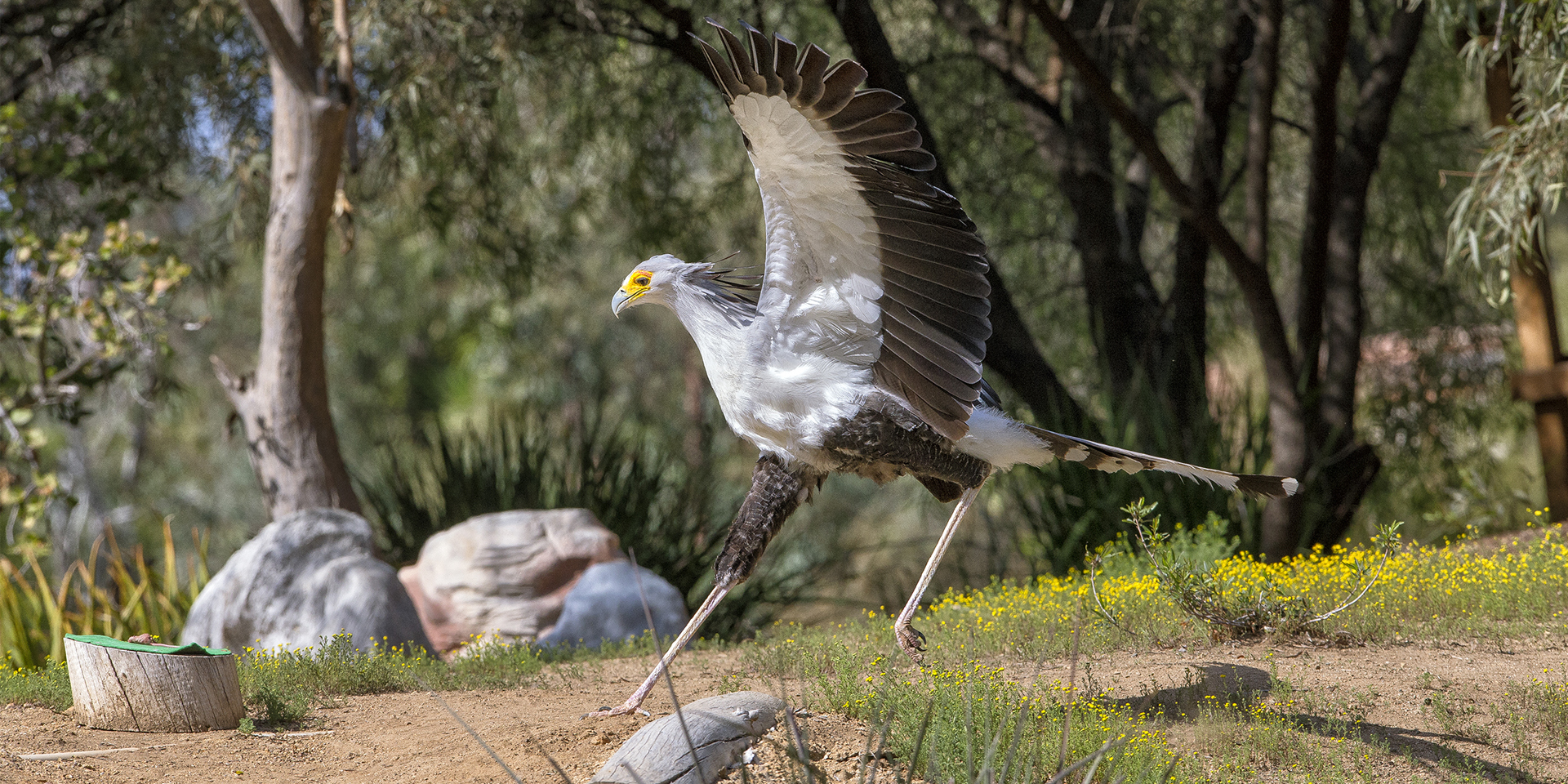
Taking It All In Stride
Striding across savannas and open patches of woodland, the four-foot-tall secretary bird Sagittarius serpentarius stalks small mammals, reptiles, large insects, and birds. They move slowly and deliberately, searching the immediate area around them, and they have been observed kicking piles of dung and tufts of grass to flush prey. A hungry secretary bird may nab its meal with its sharp, hooked beak or grab it in its long, taloned toes. The bird usually stomps on or pounds the prey to stun it before swallowing it whole.
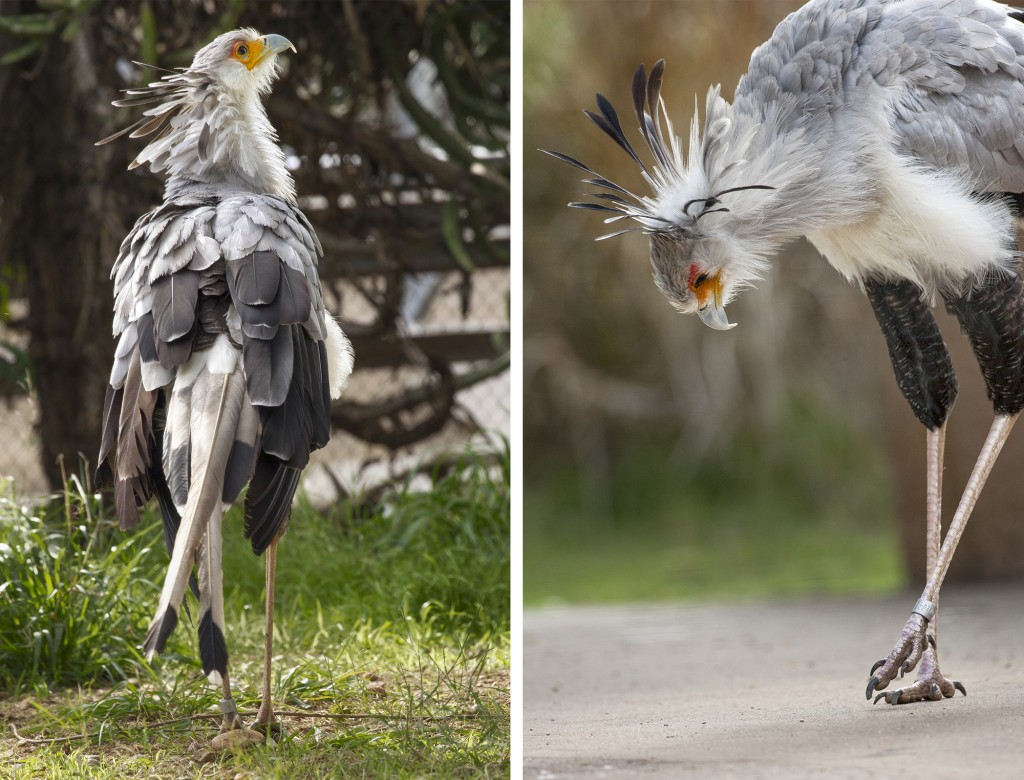
TOOLS OF THE TRADE
When it comes to scouting the scene, long limbs give the secretary bird a leg up in spotting potential meals in the grasslands. Large, long-clawed feet help it snatch prey—and stomp it into submission.
With the longest legs of any bird of prey, a secretary bird is able to cover a great deal of ground as it seeks food—it travels about 12 to 18 miles a day! Its sturdy legs are mostly covered by thick scales, which protect it from thorny brush and struggling prey—including bites from venomous snakes, since it is difficult for the fangs to penetrate the scales. Yet this adaptation comes at a cost: the bird must crouch or bend down to drink. This can be a vulnerable position, but if threatened, a secretary bird can take wing. Usually, the bird needs to have a large clear area to take off from, so finding a safe drinking spot is vital.
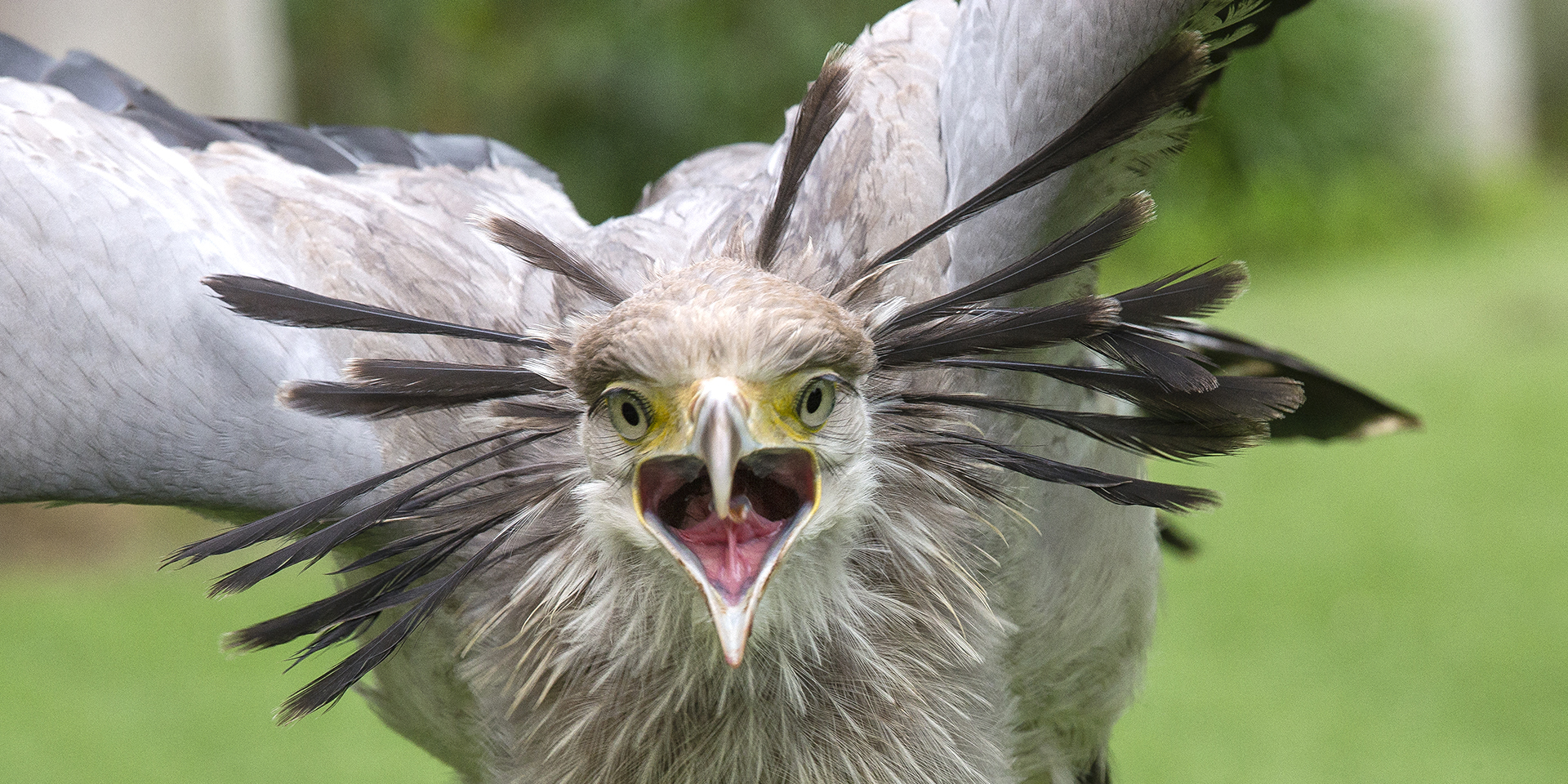
Heads Up
In the grasslands, the most visible part of a secretary bird is usually its head—and at times it is quite a sight. Depending on when you happen to look, a secretary bird can almost appear to be two different species. Short, gray feathers cover the bird’s head, but it also has a ring of long, black crest feathers. If the crest feathers are down, the bird looks a bit like an aging, balding rock star with a limp, black ponytail. With its crest feathers fully erect, however, it looks more like a punk rocker or a Las Vegas showgirl.
Those astonishing feathers may have also helped earn this bird its common name. Some sources suggest that the label “secretary” comes from the bird’s resemblance to male secretaries of the 1800s, who often walked around with quill pens behind their ears. Others believe it might have originated far earlier, as a mispronunciation of the Arabic term saqr at-tair (meaning “hunter bird”).
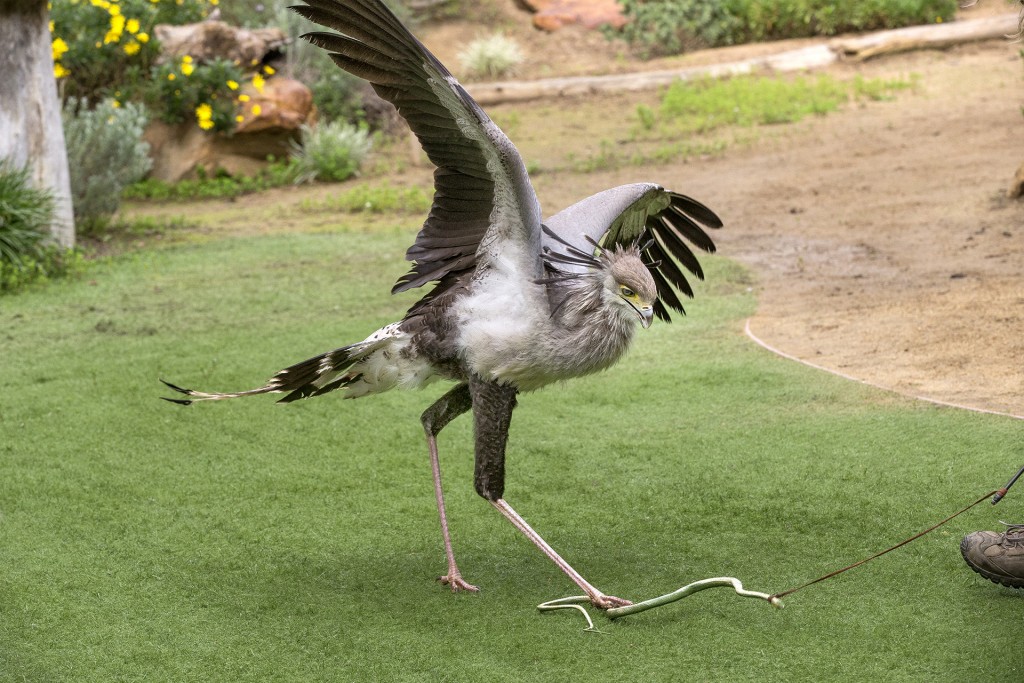
SNAKE HUNTERS
Renowned for their bold and efficient habit of killing snakes, the secretary bird’s taxonomic name, Sagittarius serpentaris, means “archer of snakes.”
Often, the bird hunts with its crest feathers raised. One thought is that this may provide shade for the bird’s eyes. Another idea is that perhaps the appearance somehow startles prey, allowing the bird to strike. The crest feathers are also raised as part of courtship and other social interactions.
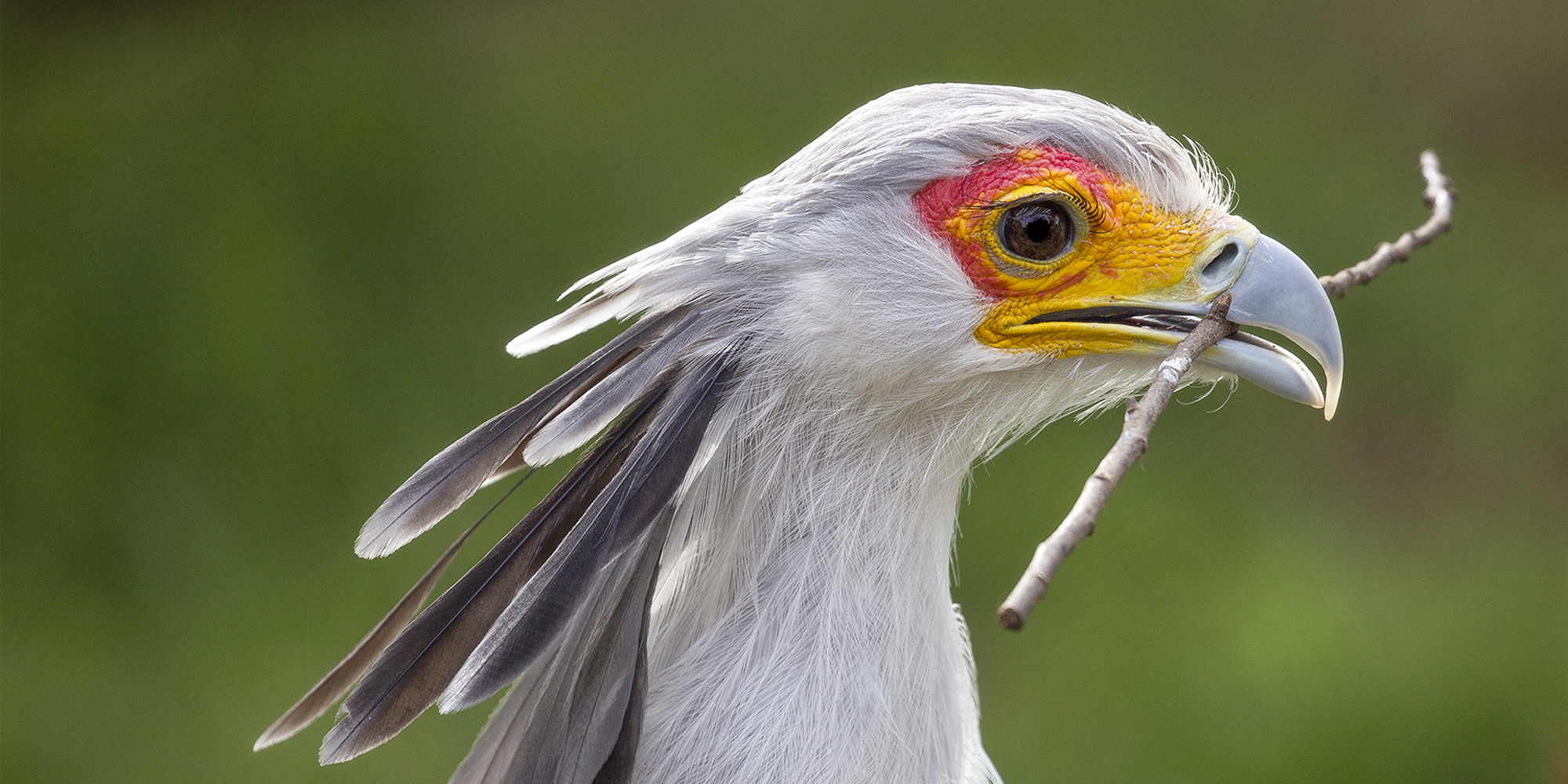
Another Level
Biologists are still learning some of the secretary bird’s secrets. It is thought that these birds are monogamous, choosing to stay with one mate “until death do they part.” Although they may have been together for a few years, a bonded pair faithfully performs courtship displays each breeding season. Undulating aerial displays and twisting, turning “dances” on the ground set the scene for ushering in the next generation. Although they spend their days on the ground, secretary birds take to the trees for roosting at night and for nesting.
Working together to build a nest, a mated pair tramples flat a spot in the canopy of a tree. Then, sticks and tough plant stems are collected and carried to the site. The result of their work is a platform nest up to 8 feet wide and 20 inches deep. The female lays one to three eggs, and both parents share incubation duty. While one bird sits on the nest, the other flies off to feed. The “changing of the guard” includes a brief bowing display, and sometimes an offering of regurgitated food to the one on the nest.
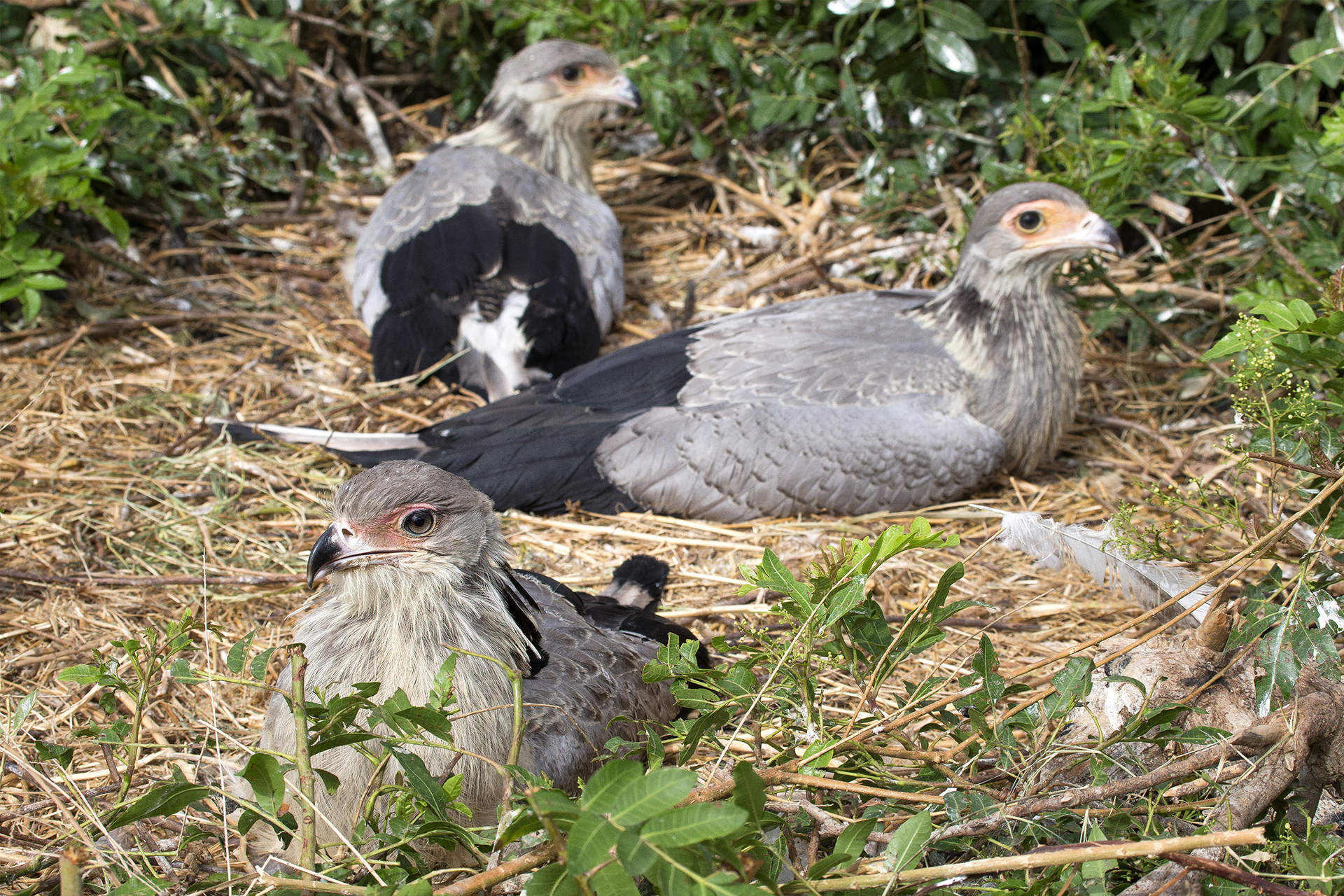
THE ART OF THE HUNT
Although they can fly at about 8 weeks of age, young secretary birds still have much to learn from their parents before striding off on their own.
Since the eggs are laid over a period of two to four days, they don’t all hatch at once. The parents, however, try to make sure each chick gets its fair share of food and water, even though the first-hatched has an advantage. The parents continue to share care and foraging duties; they often fly rather than walk back to the nest, making the process more efficient. After two to three months, the chicks fledge, but they may stay still stay with their parents for a while longer as they hone their hunting abilities. After the chicks have grown and gone, the mated pair stays together. They spend their days patrolling their territory, chasing away intruders, and, of course, stepping out for regular meals.
The San Diego Zoo Safari Park has had great success breeding secretary birds. There have been 23 chicks hatched at the Park—more than all secretary bird chicks hatched at other accredited US zoos combined!

